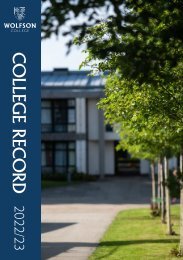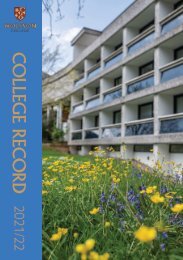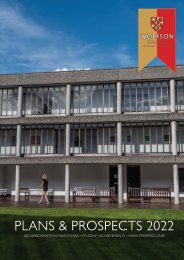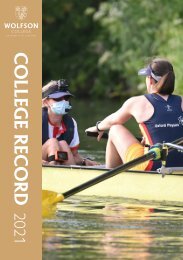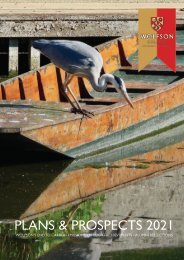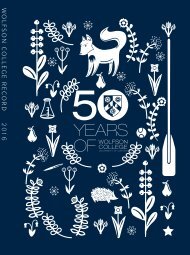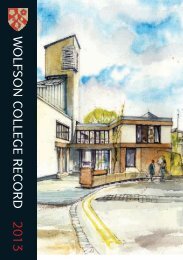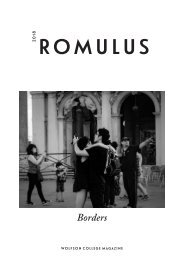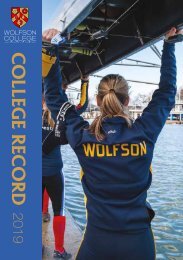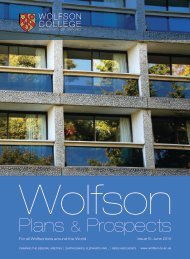Create successful ePaper yourself
Turn your PDF publications into a flip-book with our unique Google optimized e-Paper software.
Scientists, I know, regard it as natural to work in a team. This is less often the<br />
case in the humanities. Until recently, in Shropshire, Chester, Gloucestershire and<br />
Oxfordshire, I have worked alone (and largely for love), but in South-East England<br />
I have had the joy for the first time of working with colleagues, one of them a<br />
geologist. Thanks to Kevin Hayward, we have been able to source many different<br />
stones, and to say something about the transport of the raw material from the<br />
Cotswolds, Northamptonshire and the Continent, into a region which had very few<br />
sources of native freestone. Other colleagues are former Oxford pupils, including<br />
Francis Grew, now very senior in the Museum of London and perhaps my first<br />
student in Oxford, and Penny Coombe, almost my last supervisee, whose flair is<br />
apparent in every page of the book.<br />
I began by saying that sculpture once gave this country something of the appearance<br />
of Roman Italy, and in Gloucestershire, Buckinghamshire, Hertfordshire, London<br />
and Kent, it includes sarcophagi, representations of gods and goddesses, and<br />
imperial busts. Two of the latter show signs of ancient damage as a result of<br />
political violence: a bust of Pertinax was decapitated and its shoulders were sliced<br />
off when Lullingstone Roman villa (perhaps once his property) was sacked, and a<br />
bust of Caracalla’s ill-fated brother Geta lost its shoulders, and had its ears were<br />
sliced off for good measure before being tossed into the Thames. Geta is now in the<br />
Getty Museum at Malibu, but I was able to see it when I was in Los Angeles for a<br />
conference.<br />
Quite a few marbles brought to England in modern times have been recovered<br />
in excavations, including some collected by the Earl of Arundel in the early<br />
seventeenth century, which were abandoned on the site of Arundel House in<br />
London, and thus never made it to Oxford. They include perhaps his best sculpture,<br />
a frieze of Medusa heads recorded long ago by Rubens in his painting The Constancy<br />
of Scipio. Such discoveries I hope will bring some joy to archaeologists who spend<br />
their time soaking up the sun in Italy, Greece and Turkey. And, in any case, it has<br />
all been and continues to be great fun.<br />
117



